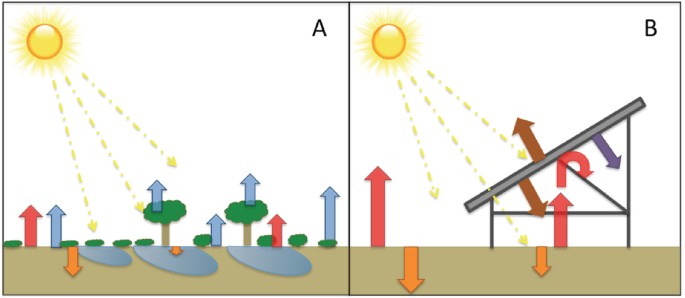Here you go from Watts Up With That? 2012 post,
LINK
Bond et al.
2001, “Persistent Solar Influence on North Atlantic Climate During the Holocene,” Science.
Neff et al.
2001, “Strong coherence between solar variability and the monsoon in Oman between 9 and 6 kyr ago,” Nature.
Usoskin et. al.
2005, “Solar Activity Over the Last 1150 years: does it Correlate with Climate?” Proc. 13th Cool Stars Workshop.
Shaviv and Veizer,
2003, “Celestial driver of Phanerozoic climate?” GSA Today
Plenty of anti-CO2 alarmists know about this stuff. Mike Lockwood and Claus Fröhlich, for instance, in their
2007 paper: “Recent oppositely directed trends in solar climate forcings and the global mean surface air temperature” (Proc. R. Soc. A), began by documenting how “[a] number of studies have indicated that solar variations had an effect on preindustrial climate throughout the Holocene.” In support, they cited 17 papers, the Bond and Neff articles from above, plus:
The correlations in most of these papers are not directly to temperature. They are to temperature proxies, some of which have a complex relationship with temperature, like Neff 2001, which found a correlation between solar activity and rainfall. Even so, the correlations tend to be strong, as if the whole gyre is somehow moving in broad synchrony with solar activity.
Some studies do examine correlations between solar activity proxies and direct temperature proxies, like the ratio of Oxygen18 to Oxygen16 in geologic samples. One such study (highlighted in Kirkby
2007) is Mangini et. al.
2005, “Reconstruction of temperature in the Central Alps during the past 2000 yr from a δ18O stalagmite record.”
And that’s just old stuff. Here are
four random recent papers.
Ogurtsov et al,
2010, “Variations in tree ring stable isotope records from northern Finland and their possible connection to solar activity,” JASTP.
Di Rita,
2011, “A possible solar pacemaker for Holocene fluctuations of a salt-marsh in southern Italy,” Quaternary International.
Raspopov et al,
2011, “Variations in climate parameters at time intervals from hundreds to tens of millions of years in the past and its relation to solar activity,” JASTP.
Tan et al,
2011, “Climate patterns in north central China during the last 1800 yr and their possible driving force,” Clim. Past.
Saltmarshes, precipitation, “oscillations.” It’s all so science-fair. How about something just plain scary?
Solheim et al.
2011, “The long sunspot cycle 23 predicts a significant temperature decrease in cycle 24,” submitted astro-ph.
Those two dozen there are just the start.
Scafetta hasn’t even been mentioned. (Sorry Nicola.) But there is a lot in those 24.
